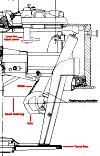About this detail of the Tiger
Like most German tanks, the Tiger was designed with its gun out of balance and a large spring was used to keep it level. The original design of the turret placed the spring horizontally by the inside right wall. This arrangement mustn't have worked very well, because when they redesigned the turret in 1943 they designed a new spring balance in a different location. It was now vertical, beside the commander's seat.
This diagram from the Tiger Turret Manual shows a profile of the "mid" turret and the major structures within it. The gun balance is labelled "Federausgleicher" and I have labelled a few of the other items myself. You can see the cylinder housing the recoil spring; it may have been identical to that in the original design. Its top is anchored in a block nestled against the roof and turret wall.
The bottom of the cylinder is attached to a large cam, which is linked to the gun housing via a chain.
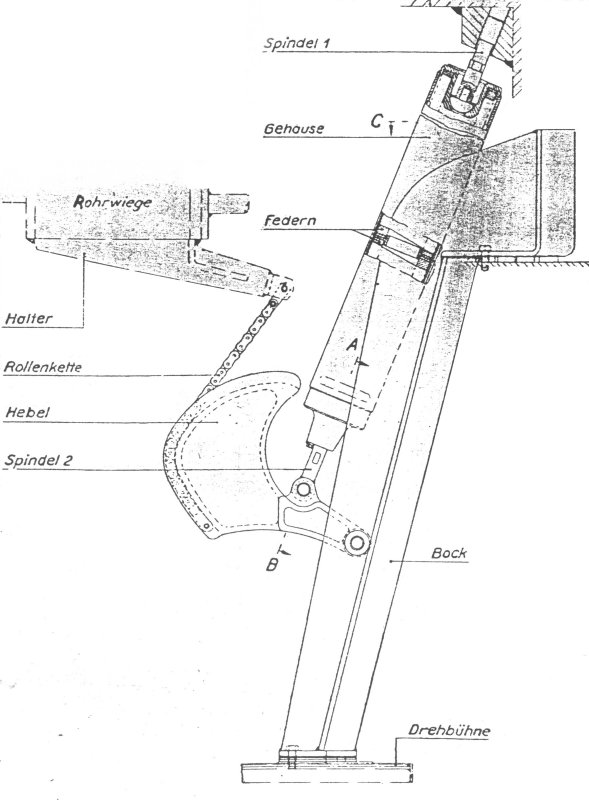
This view from the left shows the parts of the device, including the "Federn" (spring) and "Drehbühne" (rotating floor). The "Hebel" (cam) is carefully shaped to apply the correct force at each angle of elevation of the gun.
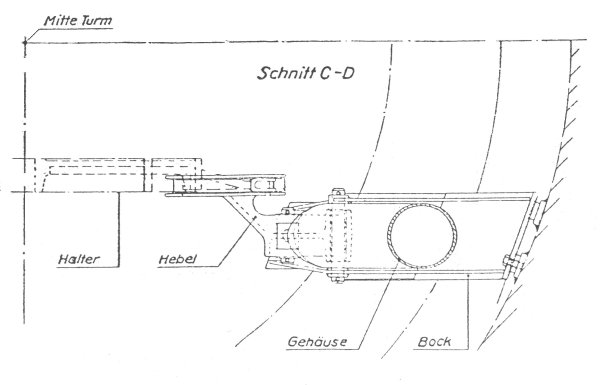
This plan view shows that the cam is offset so that it won't collide with the spring housing. The hatching at extreme right is the turret wall.
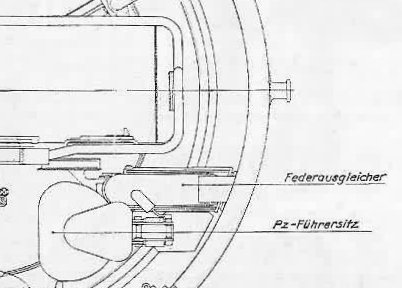
This detail of an overall turret plan shows that the spring fits tightly between the gun's recoil shield and the commander's seat. In fact, this may be the reason why the commander's seat was moved slightly to the left during the turret redesign.
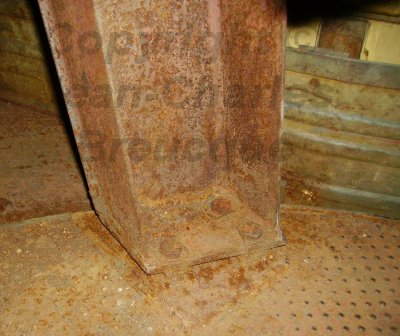
These photos were taken within the Late Tiger at Saumur museum. This shows the attachment of the "Bock" (trestle) to the floor. The trestle is open at the front.
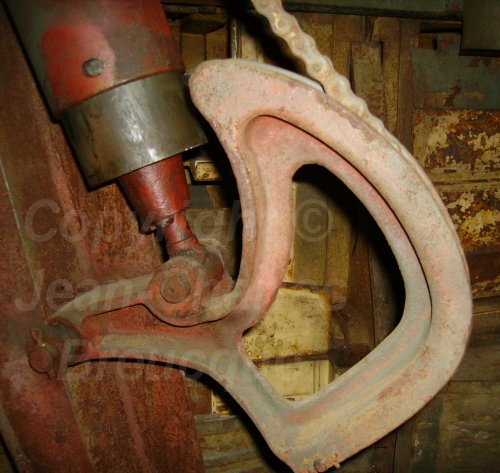
The cam.
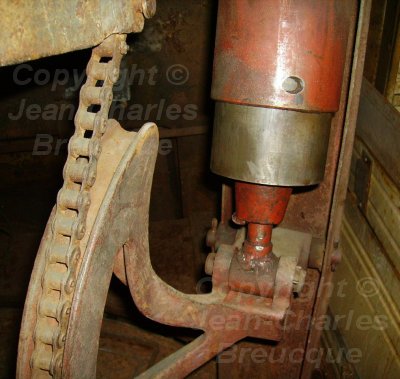
Attachment of the spring to the cam.
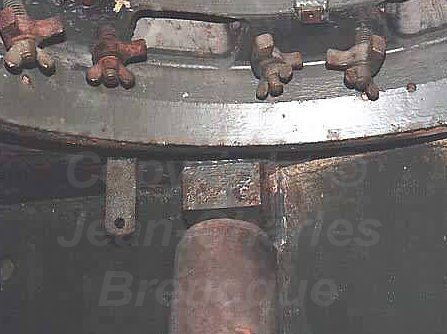
Attachment of the spring to the roof.
[1] Survey of Tiger 250122, at Bovington museum, by David Byrden
[2] Survey of Tiger 251114 at Saumur, by Hilary Louis Doyle
[3] Factory drawing 2AKF31861U1B11: Turmgehause (overall turret armour)
